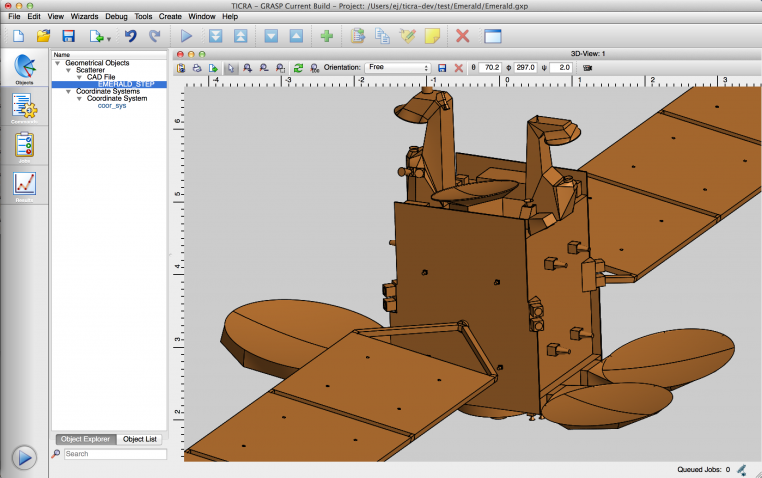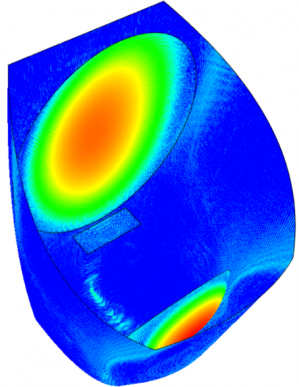-
StatusOngoing
-
Status date2016-03-02
Telecommunications satellite reflector antennas are typically designed using the reflector antenna design tool, GRASP, which provides an accurate analysis of the isolated reflector antenna performance. The analysis of the antenna performance in presence of the spacecraft platform and assessment of interference and coupling effects can in GRASP only be performed using a simplistic model of the platform, and consequently the antenna designer also needs to use a dedicated antenna farm scattering tool.
The objective of this project is to develop an add-on to GRASP with novel analysis techniques, which will allow the antenna designer to model the influence of the antenna farm as an inherent part of the antenna design in GRASP. The new tool avoids the current data exchange between GRASP and antenna farm scattering tools, leading to a faster design process and reducing the risk of errors. Also, the tool allows a more accurate design due to the detailed modelling of the platform offered.

The software tool GRASP after import of a CAD model containing a satellite platform with multiple reflector antennas. (CAD model provided by Marco Sabbadini, ESA/ESTEC)
The software tool combines the ability to analyse advanced reflector antennas for telecommunication satellites with the ability to analyse the influence of the satellite platform, interference by other antennas, and coupling between antennas mounted on the same platform. The antenna engineer is therefore able to assess the performance of the antenna in the actual working environment, without invoking a separate modelling tool to perform this task. This saves development time and minimizes the risk of errors.
The tool includes a number of enhanced electromagnetic modelling algorithms for fast and memory-efficient analysis of electrically large structures. These algorithms include high-frequency asymptotic methods and very accurate full-wave methods. The most versatile algorithm is a higher-order Method of Moments enhanced with an efficient Multi-Level Fast Multipole Method (HO-MoM/MLFMM). This combination provides a very accurate solution to large-scale electromagnetic scattering and radiation problems with a very low memory footprint, implying that entire satellite platforms can be analysed at high frequencies. The figure below shows the induced currents on ESA’s Planck telescope, which forms a scattering problem larger than 170,000 square wavelengths.

Induced currents on ESA’s Planck telescope.
SYSTEMS ARCHITECTURE
The tool developed in this activity inherits the architecture from the GRASP software package. GRASP is built upon a flexible object-oriented program structure providing a large number of modelling options for reflector antennas. As an example, more than 20 different ways of defining a reflector surface and more than 10 different feed models are available. The features developed in this project provide the following new building blocks:
- A CAD import facility allows the user to import the geometry of complex satellite platforms directly into GRASP. The CAD geometry is sent to an in-house developed higher-order quad paving mesher, providing the interface to the computational algorithms.
- The mesh is fed to the computational algorithm chosen by the user. The algorithm may be either the full-wave HO-MoM/MLFMM solver or one of the updated high-frequency asymptotic methods that provide EM analysis of general platform geometries defined as meshes.
The project is divided into 2 phases:
- The first phase deals with the development of five EM modelling algorithms.
- The second phase deals with the integration of the new algorithms into the GRASP software, with further performance-tuning for large-scale problems, and with import of complex platform geometries from CAD files.
The software prototype available at the end of phase two will be ready for market introduction after a relatively short period with further usability enhancements.
New fast EM modelling algorithms have been developed and are currently being integrated with the GRASP reflector antenna analysis software. The integrated modelling software is a prototype of the final product.


